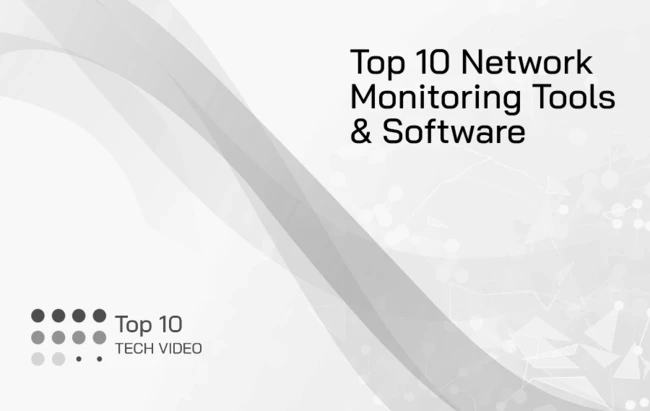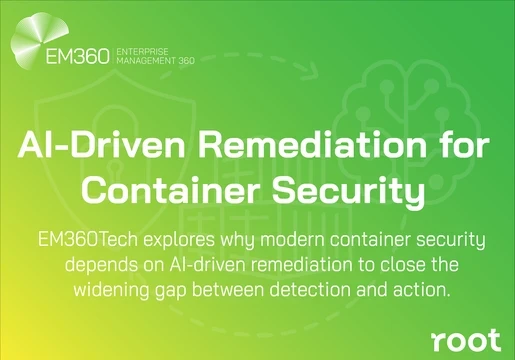Now that more companies than ever before are reliant on digital tools to ensure business productivity and efficiency, no-one can afford to struggle with a network problem. When connections don’t work as they should, organisations need a quick and effective way to examine the availability and performance of their technology.
Tools for network monitoring intend to offer real-time, historical, and even predictive views into the performance of a network, and the application traffic running through it. These tools leverage a combination of flow data, packet data, and infrastructure information to give companies a full view of network performance, and how to preserve it.
The question is, which tools for network monitoring deliver the best results? Here are ten of the top options to help you make your investment count.

10 Tools for Network Monitoring
10. Spiceworks
Spiceworks offers simple network monitoring solutions in the form of a connectivity dashboard. The solution is free to use, making it available to any company, no matter the size, and it comes with a convenient web-based GUI for monitoring performance. You can track all kinds of metrics through graphs and real-time updates and set alerts for important notifications.
The connectivity dashboard comes with integrations available for other essential Spiceworks tools like cloud help desk and inventory monitoring. This allows you to connect multiple parts of the Spiceworks ecosystem for a more comprehensive view of all your assets.
9. Icinga
An open-source approach to network monitoring, Icinga helps you to track the performance of your cloud services, network, and data centre. The software is entirely web-based and can be configured through your GUI or using Domain Specific Language. You can easily find answers to the sources of your network problems and use a clean dashboard to track all the metrics crucial to your performance management strategies.
To make the experience more accessible to beginners, the Icinga dashboard displays any problems with availability and performance using colour coding. There’s also a great community of developers online to turn to for help.
8. ConnectWise Automate
A fantastic solution for the modern world of hybrid work, ConnectWise Automate is a network monitoring solution that helps you to find issues in your IT environment before they have a negative impact on your business. You can remotely and proactively monitor all kinds of endpoints, networks, and computers. The solution will automatically discover all the devices in your network to make them more visible. There’s also a “Patch Management” tool for protecting systems with central patching.
An extension of the ConnectWise suite, this innovative solution allows excellent remote control of various components of your technology ecosystem at speed. The service is extremely easy to use and affordable even for smaller companies.
7. Zabbix
An impressive open-source tool for network monitoring, Zabbix is a well-renowned solution offering a combination of features for tracking valuable metrics in your business. You can instantly watch things like packet loss rate, network bandwidth usage, and device temperature issues in a matter of seconds. There’s also support for tracking things like when a new device is removed or added.
As an open-source solution, Zabbix has an active community spread around the world, along with excellent documentation. The tool gives users the freedom to use the open-source solution without the risk of vendor lock-in. There’s also a fantastic set of tools for predicting future trends in changes with your traffic and bandwidth.
6. Nagios
Offering a complete set of network monitoring capabilities for today’s versatile teams, Nagios can help you track the sources of unknown issues in your environment. With Nagios, it’s easy to monitor all kinds of important metrics, like response times of crucial nodes, availability, and more. You can even access advanced features like agentless monitoring and determine where unresponsive machines are in your system.
Nagios offers a combination of network monitoring capabilities in the Nagios XI and Nagios Core products. The XI solution is probably the broadest in the portfolio, as it’s available for freelancers and small businesses, as well as large organisations. You do have to configure each device you want to track, however.
5. Catchpoint
Catchpoint is one of the more popular tools for network monitoring for today’s digital businesses. Promising an easy way to identify, visualise, and manage interconnection and peering issues across networks, Catchpoint provides full visibility into your entire environment. The comprehensive system will provide you with insights into services delivering edge, local, transit, hybrid, and backbone networks, by proactively testing from a customer’s point of view.
The comprehensive network monitoring solution allows you to track all kinds of important details, from reachability levels and latency to network visibility and end-to-end delivery.
4. PRTG Monitor (Paessler)
Featuring capabilities like packet sniffing, SNMP, and WMI to help with monitoring your network, the PRTG monitoring solution from Paessler allows you to choose between a range of sensor options to monitor all the sectors of your network. Each sensor also monitors an individual value in your network, such as hardware parameter sensors, bandwidth monitoring sensors, VoIP and quality of service sensors.
The Paessler team gives you all the tools for network monitoring you might need across different systems, traffic, devices, and applications throughout your IT environment. Everything is also highly customisable, with access to real-time network maps of your infrastructure to keep you informed.
3. OpManager (ManageEngine)
Created by the ManageEngine brand, OPManager is a trusted network monitoring software with a strong reputation around the world. The solution can monitor the performance of network devices, routers, servers, switches, and virtual machines in real-time. Customisable dashboards also come with access to a huge range of widgets so you can design your monitoring experience from scratch.
With the OpManager, you get access to amazing automatic discovery solutions, comprehensive network mapping, instant alerts and more. The easy-to-use and affordable environment can track everything from storage devices to wireless LAN controllers, firewalls, and routers.
2. DataDog
Datadog’s networking monitoring tool gives you a comprehensive end-to-end view of all your cloud and on-premises networks, including application-layer performance insights. You’ll get full visibility into every layer of your infrastructure, with monitoring for DNS performance, application issues and more. There are even granular analytics tools designed to help you pinpoint the services, teams and applications most responsible for spikes in traffic.
The Datadog network performance monitoring solution also comes with performance and health insights into any on-premises device with network device monitoring. You can aggregate metrics across all devices by location and examine the health of specific devices too.
1. SolarWinds
A multi-vendor solution for monitoring network performance, the SolarWinds network performance monitor is a flexible and scalable solution for automatically tracking your availability. There’s access to intelligent mapping, to help you determine where connections are coming from, and which applications or devices are consuming the most bandwidth. Unlike other tools for network monitoring, the SolarWinds solution also comes with advanced performance analytics, critical path visualisation and instant alerts.
With a highly customisable interface, to ensure you can track the information most important to use, the SolarWinds solution keeps you one step ahead of your network. There’s also access to a range of additional tools as part of the SolarWinds Orion platform. Out of all tools for network monitoring, SolarWinds has proved to be the most efficient, most versatile and most value-driven than any other tool.
Liked this video? Subscribe to the YouTube Channel for more educational content in enterprise technology.







Comments ( 0 )